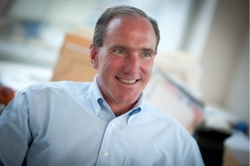 Pejman Nozad, Silicon Valley’s best-known rug dealer, has launched a new, low-flying venture firm.
Pejman Nozad, Silicon Valley’s best-known rug dealer, has launched a new, low-flying venture firm.
According to SEC filings, Nozad began raising $20 million for the new firm, Pejman Mar, a couple of months ago; his cofounder in the venture is serial entrepreneur Mar Hershenson.
The new effort isn’t exactly top secret. Nozad has himself mentioned it in social media forums, and Hershenson’s LinkedIn profile reflects that she’s been co-running Pejman Mar since May. Still, Nozad isn’t discussing the effort publicly just yet. (When I’ve asked to meet about it over the last couple of months, he has politely declined each time, suggesting that we sit down at an unspecified future date.)
The firm will be the second that Nozad has cofounded. In 1999, Nozad partnered with Saeed and Rahimi Amidi, whose rug-dealing father had given Nozad one of his first jobs as a salesman soon after the Iranian native arrived in San Francisco with $700 in his pocket. Silicon Valley lore has it that Nozad so successfully formed relationships with the rug gallery’s well-heeled clients — including Sequoia Capital’s Doug Leone – that the Amidis and Nozad formed Amidzad Partners to seize on those ties and the investment opportunities that come with them.
Some VCs would kill for the track record that Nozad has established since, with past investments that include the mobile computing device company Danger, acquired by Microsoft in 2008; the online contest site Bix, which Yahoo purchased in 2006; and the online movie service Vudu, bought by Walmart in 2010.
None were huge home runs for investors, but Forbes estimates that Nozad is “worth in the ballpark of $50 million,” suggesting those many base hits have added up. More, Amidzad is an early investor in other, flashy companies that have yet to exit, including Dropbox, which Nozad himself reportedly introduced to Sequoia. (Dropbox closed its most recent round of $250 million a year ago, at a $4 billion valuation.)
It isn’t clear whether Nozad will continue to invest with Amidzad, on whose Website he remains featured. Rahimi Amidi didn’t respond to related questions.
Either way, he seems to have a hard-charging partner in Hershenson, a Stanford engineering PhD who has cofounded numerous companies, including, most recently, the mobile commerce company Revel Touch. The 2.5-year-old startup, since renamed Tocata, has raised more than $10 million from investors, including Nozad. (Hershenson left the company in November 2012.)
The duo has already placed numerous bets in recent months, including on a still-stealth startup called Solvvy; on Sensor Tower, whose tools help developers track and increase their app rankings within app stores; and on DoorDash, a food-delivery company whose funding was led by Khosla Ventures and Charles River Ventures.
The question now is whether investors will be as charmed with Nozad as the many industry friends he has made over the years. At least one VC who has co-invested alongside him thinks they will. Nozad’s credentials may not look like everyone else’s, the investor told me, but it’s all about track records. And “Pejman,” he said, “has a good reputation.”
Photo courtesy of Forbes.
Sign up for our morning missive, StrictlyVC, featuring all the venture-related news you need to start you day.






